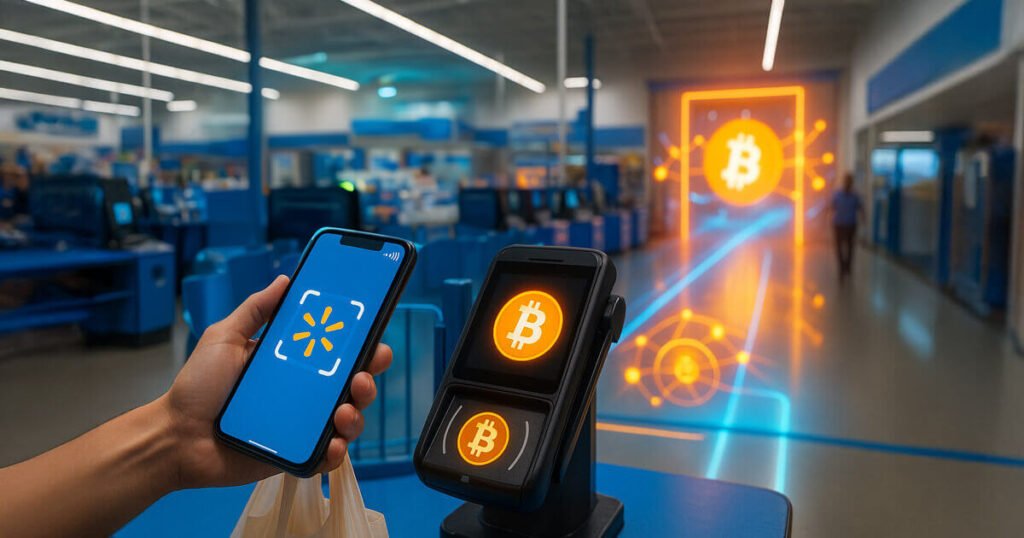The Evolving Landscape of Crypto Retail Checkouts
In the rapidly changing world of cryptocurrency retail checkouts, two primary factors are driving change: merchant rails that minimize processing costs and consumer apps that facilitate crypto buying and spending. At the forefront of this transformation is Walmart’s OnePay app, which recently partnered with Zero Hash to enhance its features. This collaboration not only allows OnePay to support Bitcoin and Ethereum trading but also facilitates hosted wallets, peer-to-peer transfers, and various on-chain deposits and withdrawals. By selectively enabling these features, OnePay is poised to reshape the retail payment landscape, providing convenience and flexibility for consumers and merchants alike.
Strategic Features of OnePay
The core of OnePay’s appeal lies in its user-friendly interface that integrates seamlessly with existing retail frameworks. According to Zero Hash documentation, custodianship of the digital assets would rest with Zero Hash entities, while execution would originate from an allied liquidity services unit. This implies that while customers can buy and spend cryptocurrencies via OnePay, the backend processes remain complex and integral to a successful user experience. The decision to enable external transfers within this app is pivotal; a closed-loop system keeps balances within internal wallets, while an open model allows consumer activity to flow onto public networks, adding an element of transparency and visibility to transactions.
Walmart’s Market Penetration
Walmart’s extensive reach into U.S. households presents a unique advantage for the OnePay app. With Synchrony rolling out Walmart cards integrated into OnePay, the groundwork is being laid for potential crypto funding and transfers. This strategic positioning minimizes customer acquisition costs for the payment app linked to retail checkouts. By examining the potential user base, the numbers are compelling. If 10 million active users engage, with half enabled on crypto, and a significant portion making regular monthly purchases, OnePay could facilitate daily Bitcoin purchases in the millions—though still modest when juxtaposed with the massive daily net flows seen in U.S.-based Bitcoin ETFs.
Current Trends in Crypto Transactions
Meanwhile, the broader payment landscape continues to adapt to the growing prevalence of cryptocurrencies. Companies like Shopify and Coinbase have pioneered mechanisms to allow merchants to accept stablecoins, specifically USDC, within their payment ecosystems. This not only reduces operational gaps between cryptocurrencies and existing payment systems but also empowers users to send crypto to external wallets without friction. With limits set at $100,000 weekly for purchases, cash flow into external wallets is increasingly streamlined. Additional features like peer-to-peer functionality provide further options for consumers, enabling them to participate more actively in the cryptocurrency space.
Fee Structures and Transaction Speed
The conversation around cryptocurrency payments is not complete without acknowledging the fee structures and transaction speeds associated with different networks. Ethereum’s average transaction fee hovers around 40 cents, while layer-2 solutions fluctuate between 4 and 20 cents. Bitcoin’s Lightning network boasts quick payment processing times for minimal fees, yet standard transaction confirmations on the Bitcoin blockchain can take up to ten minutes. This fee and speed analysis is crucial for retailers when configuring payment options, as it dictates the user experience and operational efficiency.
Case Study: Steak ’n Shake
A practical case study illustrating the impact of these changes is Steak ’n Shake, which has already integrated Bitcoin payment solutions. After implementing a Lightning network for Bitcoin transactions, the restaurant chain reported a notable 10.7 percent increase in same-store sales in one quarter, attributing much of this success to blockchain-savvy customers. Their appeals to Bitcoin enthusiasts highlight the ability of digital assets to stimulate sales in brick-and-mortar environments while also achieving significant reductions in processing costs compared to traditional credit card systems.
Future Outlook for Retail Crypto Payments
As OnePay and other retail apps evolve, the strategic decision-making surrounding product toggles and backend operations will determine their success in a competitive market. Current solutions enable payments through multiple crypto rails—including Bitcoin’s Lightning Network and Ethereum through layer-2 protocols. As these applications mature, they will likely leverage stablecoins as a fiat alternative for online commerce and in-person kiosks. In summary, while the technology to facilitate crypto payment is increasingly available, the question lies in how retailers design their systems to maximize efficiency and consumer satisfaction while navigating an ever-evolving landscape.
By addressing transaction efficiencies, fee structures, and operational challenges, retailers can effectively capitalize on the burgeoning cryptocurrency market and align their services with the preferences of modern consumers. Moreover, as companies like Walmart innovate through platforms such as OnePay, they provide a potential model for others to follow, paving the way for broader acceptance of digital currencies in mainstream retail.


